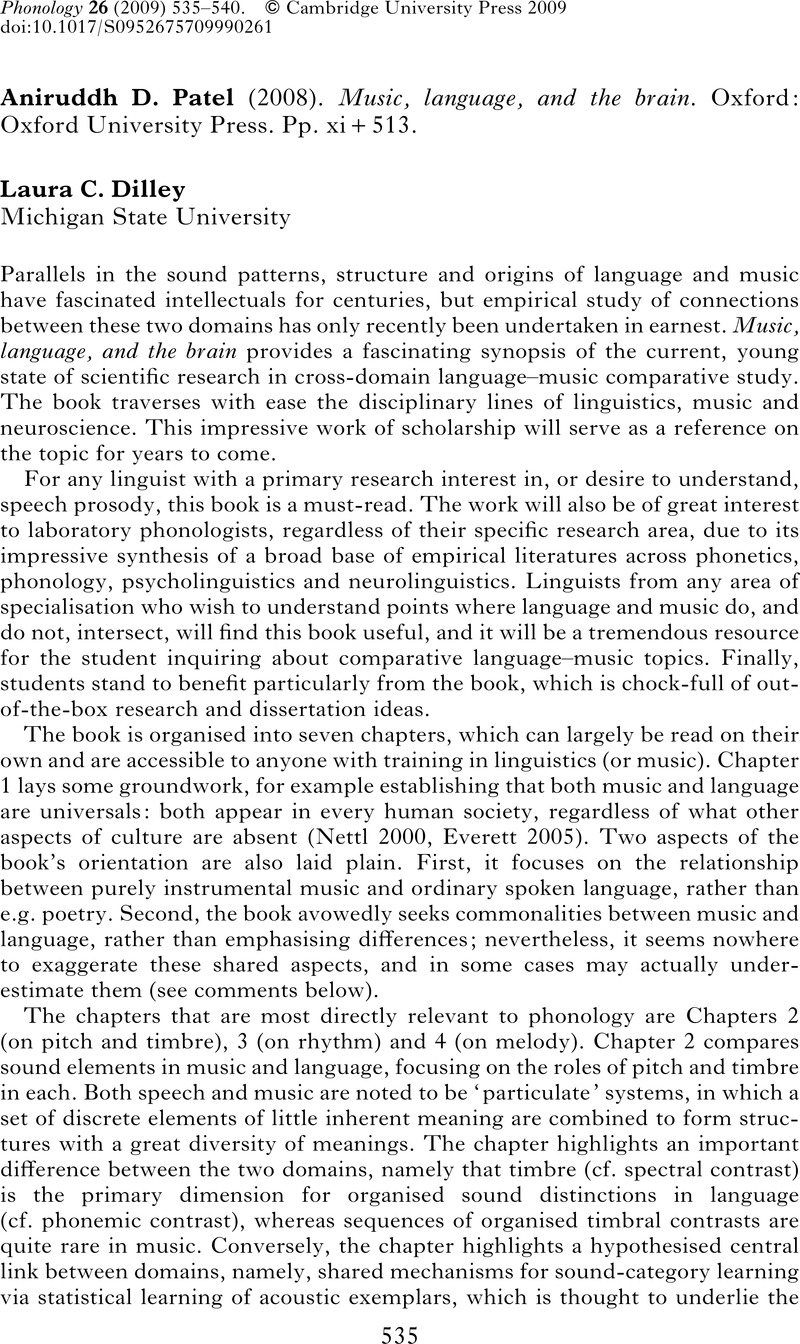Crossref Citations
This article has been cited by the following publications. This list is generated based on data provided by Crossref.
Vanden Bosch der Nederlanden, Christina M.
Qi, Xin
Sequeira, Sarah
Seth, Prakhar
Grahn, Jessica A.
Joanisse, Marc F.
and
Hannon, Erin E.
2023.
Developmental changes in the categorization of speech and song.
Developmental Science,
Vol. 26,
Issue. 5,



